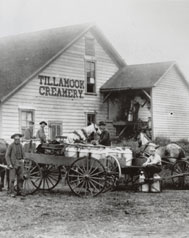 A while back I posted a podcast with Steve Burge of Tillamook where he talked about how Tillamook, a cooperative, made up of over 150 dairies, took on a process mapping effort to turn 100 years of “tribal knowledge” into documented processes.
A while back I posted a podcast with Steve Burge of Tillamook where he talked about how Tillamook, a cooperative, made up of over 150 dairies, took on a process mapping effort to turn 100 years of “tribal knowledge” into documented processes.
Since the story was a great example of tackling a process documentation effort that involved the whole org, rather than just IT, we decided to turn it into a webinar. We worked with ModernAnalyst.com and created a 35 minute webinar which you can check out here (you can also check out the slides below).
What the webinar’s about
Steve talks through the slides for about 25 minutes and then fields questions for about 10. Here are some of the topics he discusses:
- How he built a core team where IT was in the minority and the majority of the members came from the business side.
- How the team decided where to begin
- How they involved over 150 people, from all over the company, to help detail the processes and how by doing so it helped eliminate silos and highlight “white spaces.”
- How this effort led to a “new” view of BPM.
Pau for now…



 Posted by Barton George
Posted by Barton George 